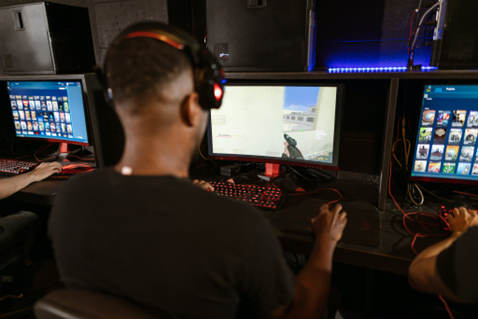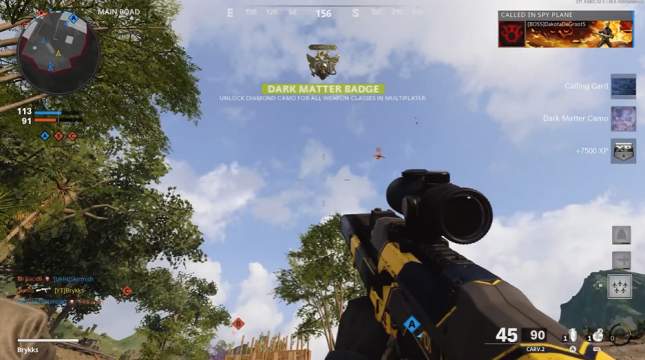
From Racetracks to Virtual Arenas: Examining the Evolution of Competitive Horse Racing Games
Updated on
Let’s get one thing straight from the start. Horse racing games haven’t advanced much, at least not compared to other type of games. However, we still have new elements and advancements that bring us closer to the world of horse racing.
As fans, we all want to experience what is like to become racehorse owners and riders, and these games allow us to explore the sport even more. Horse racing is a sport that dates back thousands of years. Even modern horse racing can be traced centuries back, which proves the sport’s cultural significance and importance.
That’s why it’s no surprise to find horse racing games. In the beginning, horse racing games weren’t that much. They offered a 2D pixelated action of something that looked like horses, but nowadays horse racing games allow you to dive deeper into the sport uncovering things like breeding, training, stable management, finances, and much more.
The industry advanced to a point where we can now own digital racehorses. Yes, you’ve heard that right. NFT and blockchain technology helped the horse racing gaming industry bring the most desirable aspect of the sport – racehorse ownership.
So, let’s dive deeper and find out more about the evolution of horse racing games.
The Early Canter: 1980s-1990s
The 1980s witnessed the birth of horse racing games on arcade machines and early home computers. If we can call it a game. Titles like “Steeplechase” introduced players to basic graphics and simplistic gameplay, laying the groundwork for future advancements.
They didn’t offer much in terms of racing. You just pick a random horse, hold one button, and finish the 2D race. It had no controls, and no options apart from racing, but it was still fun to play.
By the 1990s, advancements in technology allowed for 3D graphics and more realistic simulations. This is where the horse racing gaming industry was thriving and it was the first time that a horse racing game would come out that featured other aspects of the sport apart from racing.
Games like “Champion Jockey: G1 Jockey & Gallop Racer” offered players a taste of virtual horse racing with improved visuals and controls.
Racing into the Millennium: 2000s-2010s
The biggest change happens in the 2000s. Horse racing games became more popular, and therefore developers invested a lot more money into the development of the games. This was also the time when we had our first online integration. A horse racing game that can be played online with your friends.
Titles such as “Virtual Horse Racing 3D” and “Horse Racing Manager” offered online tournaments and betting mechanics, enhancing the competitive aspect of the games.
As technology advanced, so did the realism of horse racing simulations. Games even advanced to a point where they came with their own betting platforms like TwinSpires, where people can place in-game bets on a virtual race.
But this wasn’t the only thing that was changed in the industry. We also had the mobilization of games, meaning many developers turned to mobile games due to the rise of mobile gaming popularity.
Games like “Rival Stars Horse Racing” and “Horse Racing 2016” focused on detailed horse models, customizable jockeys, and in-depth training mechanics, appealing to simulation enthusiasts.
Nowadays, they are huge games with constant updates, integrated social elements, a huge active player base, and tons of entertainment.
The 2020s and Beyond
In the last couple of years, we have witnessed yet another shift in the horse racing game industry. With the commercialization of blockchain technology, we had the first NFT horse racing games. This is a relatively new concept where players can play and earn money (tokens and NFTs).
This allowed horse racing fans to truly experience what is like to be racehorse owners, and it is definitely a change that makes a huge difference to the world of horse racing gaming.
With the advent of virtual reality (VR), horse racing games have reached new heights of immersion. Titles like “My Virtual Horse” offer players a lifelike experience, allowing them to feel the thrill of riding a virtual horse in breathtaking environments.
Future of Horse Racing Games
AI Integration: Artificial intelligence (AI) continues to evolve, promising smarter and more challenging opponents in horse racing games.
Cross-Platform Play: The future may see seamless cross-platform play, allowing gamers on different devices to compete against each other.
Enhanced Realism: With advancements in graphics and physics engines, future horse racing games are poised to offer unparalleled realism, blurring the line between virtual and reality.
Final Words
To be honest, a lot of things have changed in the horse racing gaming niche, but we didn’t get the same change when we talked about graphics and gameplay. Yes, the technology is far more advanced and these games are more enjoyable, but are far from realistic.
When we compare a game like Winning Post 10 (the latest horse racing game) and Red Dead Redemption 2 which came out a couple of years ago, the difference in graphics is shocking. Horse racing game developers still have a long road to making horse racing games feel more realistic and entertaining.











You have to LOGIN to submit & see all comments